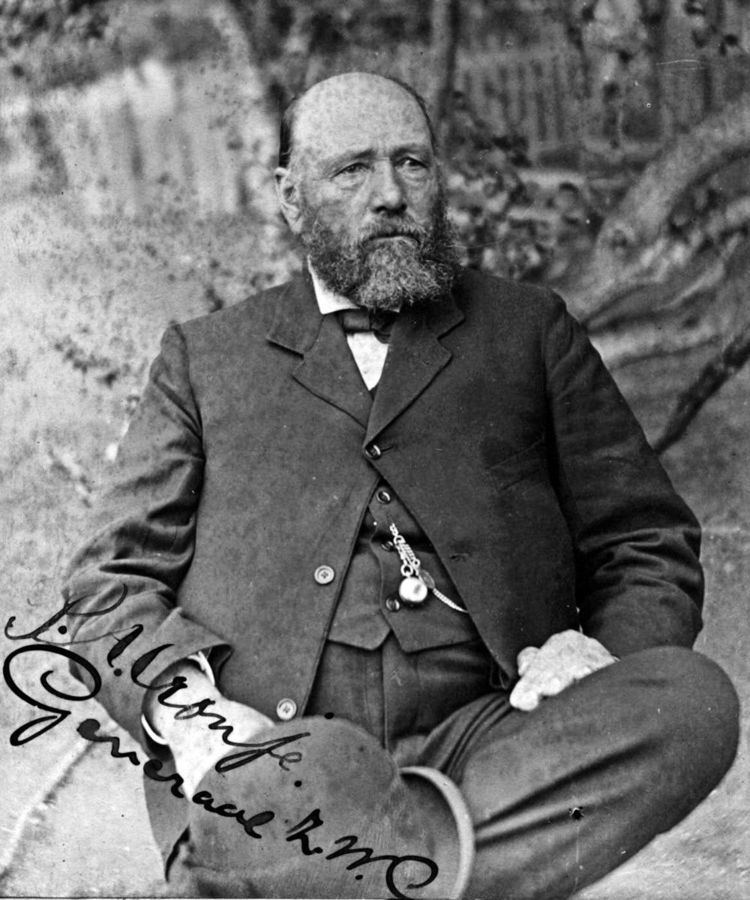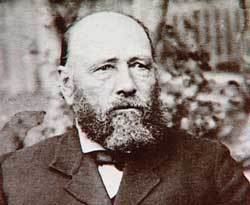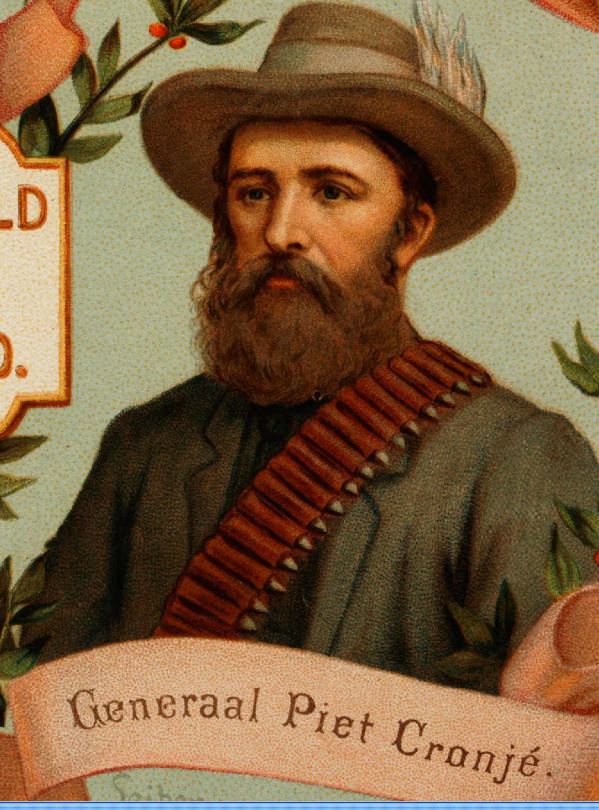Name Piet Cronje | ||
 | ||
Occupation Farmer, soldier, politician | ||
Piet cronj
Pieter Arnoldus Cronjé, commonly known as Piet Cronjé (/krɒnˈjɛər/ kron-YAIR; 4 October 1836 – 4 February 1911) was a general of the South African Republic's military forces during the Anglo-Boer wars of 1880-1881 and 1899-1902.

Born in the Cape Colony but raised in the South African Republic, Cronjé made his reputation in the First Boer War, besieging the British garrison at Potchefstroom. He had a distinctive appearance, being short with a black beard and was reputed to have considerable personal courage.

He was in command of the force that rounded up Jameson at Doornkop at the conclusion of the Jameson Raid on 2 January 1896. During the Second Boer War Cronjé was general commanding in the western theatre of war. He began the sieges of Kimberley and Mafeking. At Mafeking, with a force between 2,000 and 6,000 he laid siege against 1,200 regular troops and militia under the command of Colonel Robert Baden-Powell.

After Lord Methuen attempted to relieve the siege of Kimberley, Cronjé fought the Battle of Modder River on 28 November 1899, where the British won a Pyrrhic victory over the Boers. Cronjé's novel tactics at the Modder River, where his infantry were positioned at the base of the hills instead of at the tops (in order to increase the effectiveness of their rifles' flat trajectories) earned him a place in military history. However the tactics ascribed to him were not his own; he was convinced by General Koos De La Rey and President M.T. Steyn. After Modder River, Cronjé repulsed Methuen's forces at the Battle of Magersfontein on 11 December 1899. This was actually due to Koos de la Rey's tactics and planning. Cronjé sat in camp not doing much fighting or planning.

Cronjé was an attritionist and did not see the value in manoeuvre battles. He was defeated at the Battle of Paardeberg where he surrendered with 4,150 of his commandos on 27 February 1900 after being enveloped by Lord Roberts' forces. The commanding officer of the 3rd Battalion, the Grenadier Guards, Lt. Col. Eyre Crabbe, was surprised to find that Cronjé had been accompanied on campaign by his wife.

After his surrender, he and his wife were imprisoned as a prisoner of war in St. Helena Island where he remained until the conclusion of peace negotiations in 1902. Boer morale sank after his defeat, with the capital of the Orange Free State, Bloemfontein, being taken without a shot being fired.
Accompanied by his wife, Hester, he was sent to St Helena prisoner of war camp, where he remained until the end of the war. He was humiliated and shunned by the other Boer generals, and ridiculed in the press. He was never asked to the peace talks at Vereeniging. He took part in the World Fair reenactments of the Anglo-Boer war at St Louis in 1904. Dubbed a 'circus general' by the South African press, he failed to return home, but instead joined a show on Coney Island, Brooklyn, New York.
